Short Book Reviews
Hanna Kryszewska, Poland
Hanna Kryszewska is a teacher, teacher trainer, trainer of trainers. She is a senior lecturer at the University of Gdańsk, and EU Teacher Training College where she trains pre-service teachers. She is co-author of resource books: Learner Based Teaching, OUP, Towards Teaching, Heinemann, The Standby Book, CUP, Language Activities for Teenagers, CUP, The Company Words Keep, DELTA Publishing, and a course book series for secondary schools: ForMat, Macmillan. She is also co-author of a video based teacher training course: Observing English Lessons. Hania is a Pilgrims trainer and editor of HLT Magazine.
E-mail: hania.kryszewska@pilgrims.co.uk
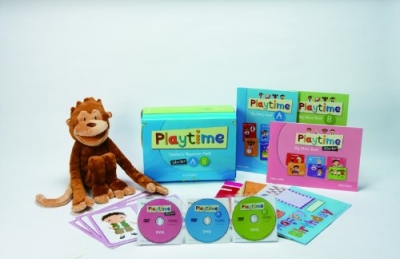
Playtime Course: Playtime A. C. Selby (2011) OUP, pp 42. ISBN 978-0-19-404654-1, Playtime A Workbook. C. Selby (2011) OUP, pp 30. ISBN 978-0-19-404659-5, Playtime A Teacher’s Book. C. Selby (2011) OUP, pp 172. ISBN 978-0-19-404660-2, Big Story Book Starter. C. Selby (2011) OUP, pp 42. ISBN 978-0-19-404656-5, (6 stories), Big Story Book A. C. Selby (2011) OUP. ISBN 978-0-19-404657-2, (6 stories), Big Story Book B. C. Selby (2011) OUP. ISBN 978-0-19-404658-9, (6 stories). Playtime is an attractive and stimulating story-based course for young learners. It teaches English through absorbing and colourful stories, dialogues and songs. Grammar and vocabulary are presented and practised in meaningful contexts and activities using the class book with pop outs and flashcards, workbook activities, flashcards, cross-curricular flashcards, CD audio recordings, and animated stories on DVD. The teacher’s book offers ready lesson plans and additional activities; so do the iTools and parent and teacher website with additional songs, games and photocopiable resources. The course also includes a lovely large size monkey puppet, a pocket poster, and a routine poster. More information on www.oup.ccom/elt/palytime
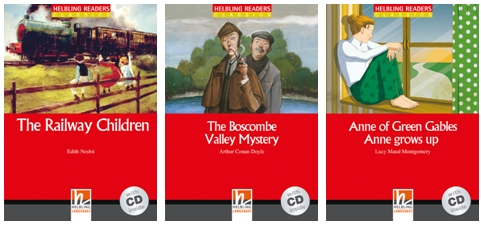
Helbling Readers Classics. Helbling Languages (2015). The Railway Children. Edith Nesbit ISBN – 978-3-99045-278-3, pp 76, The Boyscombe Valle Mystery. Arthur Conan Doyle. ISBN – 978-3-99045-280-6, pp 72, Anne of Green Gables. Anne grows up. Lucy Maud Montgomery ISBN- 978-3-99045-282-0, pp 72. Books in the red series of graded reading materials for teenagers come at five levels (KET). The books are adaptations of well loved classics so obviously the stories are interesting and a good read. The learners first become familiar with the author and the story behind the book, and then they do some vocabulary activities in the pre-reading tasks. Also as they read the story they can see new words marked with a dot (and explained at the bottom of the page). Readers can also listen to the whole story and do some activities available on an accompanying audio CD. As they read the story they can do some while reading mini tasks. Finally there are some post-reading activities. The readers are pleasant to the eye thanks to good illustrations with careful page design; each book is illustrated in its own individual style. I am sure the series will be popular among language learners as additional reading and CLIL material. More free online activities are available from www.helbling-ezone.com
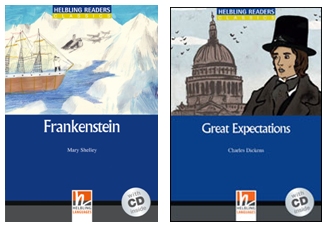
Helbling Readers Classics. Great Expectations. Charles Dickens. Helbling Languages (2015). ISBN-978-3-99045-284-4, pp 96. Frankenstein. Mary Shelley. Helbling Languages (2015). ISBN-978-3-99045-286-8, pp 80. Books in this new series of graded reading materials for language learners come at five levels. Great Expectations is pitched at level 4 (A2 Waystage/B1 Threshold/ PET level), while Frankenstein is pitched at level 5 (B1 Threshold/ PET level).The series presents in simplified form well-loved classics and high quality fiction. The learners first become familiar with the author and the book. Then they become familiar with some lexis in the pre-reading tasks. As they read the story they can see the new words marked with a dot (and explained at the bottom of the page); they can also listen to the whole story and do some activities available on an accompanying audio CD. Finally there are some after reading activities. The illustrations in Frankenstein are pleasant to the eye and reminiscent of children’s drawings, while the illustrations in Great Expectations are in dark and sad colours, I suppose reflecting the tone of the story and the period. On the whole I am sure that books in the Classics series will be popular among language learners as additional reading material. More free online activities are available from www.helbling-ezone.com
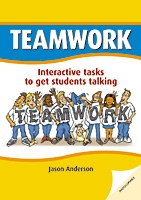
Teamwork. Interactive tasks to get students talking. J. Anderson. (2004, reprinted 201, 2012 and 2013) DELTA Publishing. ISBN 1-900783-78-9, pp. 95. The book comes from an accomplished author who has written many resource book materials for DELTA Publishing. You can read more about the author at
http://www.deltapublishing.co.uk/author/jason-anderson, and for a review of another book by Jason Anderson in HLT click here. This photocopiable resource book for classroom use is aimed at language classes in which students practise their speaking, interaction and communicative skills. Although the book was published over 10 years ago it is worth reminding or telling HLT readers of its existence, especially in the light of the new publications on Communicative Language Teaching. The book contains 20 photocopiable ideas and relevant materials which involve genuine communication and interaction between the learners. The topic areas of the activities, language focus, activity summary and supplementary activities are well described in the contents page which you can view at
http://www.deltapublishing.co.uk/content/pdf/teamwork/Teamwork_sample_pages.pdf
The activities are pitched between intermediate to advanced levels, and the levels are clearly indicated in the activity description. You can download sample pages from:
http://www.deltapublishing.co.uk/authors/jason-anderson/teamwork
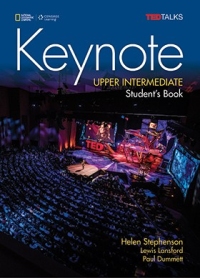
Keynote. Upper Intermediate. Student’s Book. H. Stephenson, L. Lansford and P. Dummett. NLG and CENGAGE Learning (2015) ISBN 978-1-305-39913-6, pp.183. This is a brand new and truly innovative young adult and adult six level course based on TED talks which provide the learners with inspiring ideas as a springboard for language work. (For a preview of Keynote Intermediate Student’s Book in HLT click here). In the course the learners become familiar with the ideas presented by the TED keynote speakers, and then explore these ideas by developing a deeper understanding of the world and various significant issues worth learning about. These inspring topics also lead to developing the learners’ ability to express themselves powerfully in private and professional contexts. The learners develop their listening skills as well as their critical thinking and presentation skills. The topics, among others include global issues, success, work life balance, and daring to disagree. Each unit in the course book has a clear grammar, vocabulary and pronunciation focus. The four language skills: reading, listening, speaking and writing, are developed throughout the course, using the topics as a springboard. Finally a lot of attention is given to presentation skills. The course book comes with a student’s book, workbook with audio CD’s, teacher’s book with audio CD’s, MyELT online workbook, an interactive eBook, and various teacher’s presentation tools. More materials and information about the course are available from http://www.eltkeynote.com
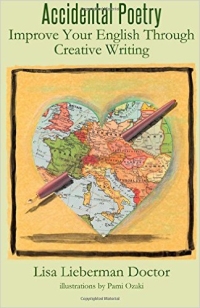
Accidental poetry: Improve Your English Through Creative Writing. Lisa Liberman Doctor. Harbor Hall Publishing (2015) ISBN 9780578157917, pp.101. This is a book that will inspire many teachers and learners. The author offers a formula for writing what she calls accidental poetry, although many of the final products could be described as mini narratives. All the learners need is basic English vocabulary and one of the frames proposed in the book. The ‘poetry’ the learners produce is a couple of lines long, yet it is very powerful e.g. Everything is black and I feel blue or I see myself in red numbers. In the book the author first presents the ways to use the book, and then provides focus and questions to direct the creative writing process, e.g. awakening the six senses (including intuition), longing, yearning, desiring, or weaving in darker colours. These questions help the learners to find their ‘voice’ and explore words and language beyond what a traditional English language classroom can offer.
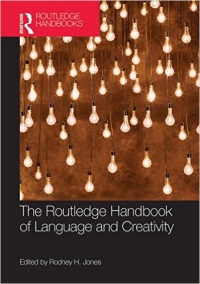
The Routledge Handbook of Language and Creativity. Ed. R. H. Jones. (2016). ISBN 978-0-415-83973-0, pp534. This book has been published in the Routledge handbook series and will be of great interests to all those teachers, students and researchers who are interested in recent
developments in looking at the relationship between language and creativity. The texts by renowned contributiing authors have been arranged into four groups: dimensions of language and creativity, literary creativity, multimodal and multimedia creativity, and creativity in language teaching and learning. Ronald Carter, who has written the foreword, provides an insightful overview of the book, and the various voices it contains. He points out that in the past creativity, including language creativity, used to be discipline related and involved individuals. These days, it transpires, language creativity involves social discourse, and so to speak, has been unlocked from private minds; it is no longer ‘the province of creative individuals’. Also creativity is no longer solely related to aesthetics, instead creative use of the language has become part of social actions and problem solving. It involves social media, new strategies, sharing laughter and humour. Creative use of language has become a collaborative behaviour. Language teachers are likely to start reading the book from the chapters on creativity in second-language learning, multilingual creative cognition, literature and language teaching, creativity and composition, and teaching creative writing.
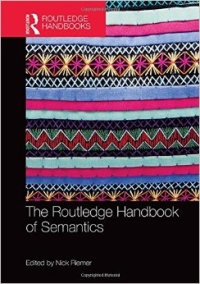
The Routledge Handbook of Semantics. Ed. N. Riemer. Routledge. (2016). ISBN 978-0-415-660173-7, pp533.This book has been published in the Routledge handbook series and will be of great interest to all those teachers, students and researchers who are interested in recent
developments in current linguistic semantics. It offers insights into different aspects of viewing meaning, and the 7 chapters cover the following areas: fundamental issues, approaches, meaning and conceptualisation meaning and context, lexical semantics, semantics of specific phenomena, and extensions. The texts present the state of the art of some important areas of semantics, and semantics related issues. The contributions come from prominent academics in the field, and the individual texts will be of interest to some teachers, academics, undergraduate and postgraduate students, and DELTA trainees and trainers. However, there is hardly any mention of any theoretical or practical implications the findings have on ELT, both language learning and language teaching, so ELT teachers who pick up the book might be disappointed.

Please check the Methodology and Language for Primary Teachers course at Pilgrims website.
Please check the Methodology and Language for Secondary Teachers course at Pilgrims website.
Please check the Teaching Advanced Students course at Pilgrims website.
Please check the English Language Improvement for Teachers course at Pilgrims website.
Please check the English Language Improvement for Adults course at Pilgrims website.
Please check the Creative Methodology for the Classroom course at Pilgrims website.


|